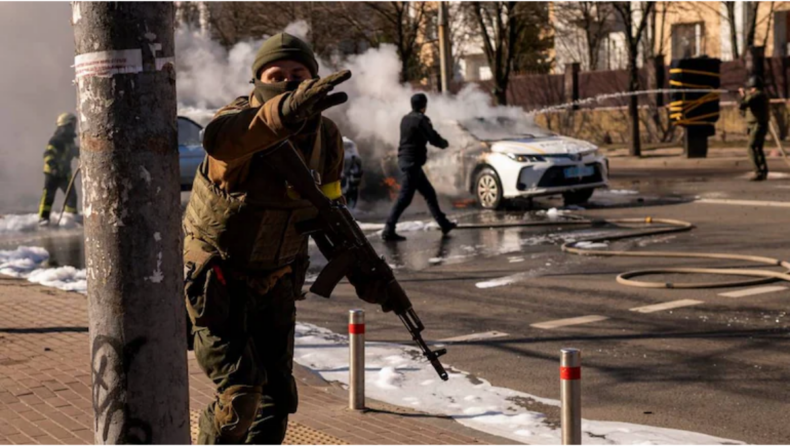Since February 24, Russia has been waging a war against Ukraine after the latter showed signs of interest in joining NATO. The ongoing conflict has resulted in a humanitarian disaster with tens of thousands of people dead, including civilians, and millions displaced in Eastern Europe. As the fighting rages on, an inevitable fear has raised alarms. Even as the Ukrainian soldiers continue their struggle against bullets and missiles, they might have to soon face an invisible enemy in the name of chemical weapons.
Mariupol Braces Another Round
On 11th April, this fear resurfaced when the Aziz regiment, a unit of the National Guard of Ukraine, claimed that Russian forces had employed the use of chemicals against innocent civilians in the south-eastern city of Mariupol, which has been targeted for weeks now. “About an hour ago, Russia occupation forces used a poisonous substance of unknown origin against Ukrainian military and civilians in the city of Mariupol, which was dropped from an enemy UAV,” the Azoz regiment posted on Telegram on Monday.
Chemical weapons warfare involves using the toxic properties of chemical substances as weapons. Along with nuclear and biological warfare, is considered part of Weapons of Mass Destruction (WMD). It can be released in the form of liquid and gas, thus affecting the person by natural means of water and air without any resistance. Instead of killing the person immediately, it can cause lasting wounds that may be visible for generations. Despite being suited for war, it has been used on large scale against civilians as well.
The source is yet not confirmed by the authorities of Ukraine, the US and the UK who had earlier raised concerns about the potential use of such weapons by Russia. Ukraine’s Deputy Defence Minister Hanna Maliar had addressed the issue, saying that the allegations are being investigated and adding to the assumptions that phosphorus ammunition had been used.

Many Ukrainian officials had also earlier alleged that Russian forces had deployed white phosphorus munitions which are known to be strong enough to burn human flesh. The aforementioned chemical is usually used for industrial purposes although its deployment against civilian targets has been banned by the Geneva Convention. This is a potentially dangerous development in the war which sees no sign of peace shortly.
War of Words
The intriguing point of the war will be the response from Ukraine as well as the US and Europe. In the previous month, Jens Stoltenberg, Secretary-General of NATO, had said that using chemical weapons is a blatant violation of international law with far-reaching consequences”. US President Joe Biden addressed a similar question of NATO’s response to such use. The answer was yes but the shrewd Democrat did not specify any details, preferring to let his rival guess. “We would respond if he (Putin) uses it.
The nature of the response would depend on the nature of the use”, he answered the press, showing his adept hand at veiled threats. Ukraine President Volodymyr Zelensky had also said that any use of chemical weapons would mark a “new stage of terror against Ukraine” and plead to western nations for arming his forces with weapons to defend itself from the eastern threat.
Ukraine and its people will hope that Russia falls for the deterrent. Any possibility of chemical warfare could lead to a disaster affecting millions of people for generations to come. The economic and environmental cost of such a scenario would be monumental, with the land and its natural inhabitants being forced to leave for cleaner air to breathe. The health consequences will be felt in not only Ukraine but in the surrounding regions as well.
US soldier wearing a protective mask in combat to protect against polluted air

Site in the besieged city of Mariupol

Published By : Akshita Katoch
Edited By : Khushi Thakur













